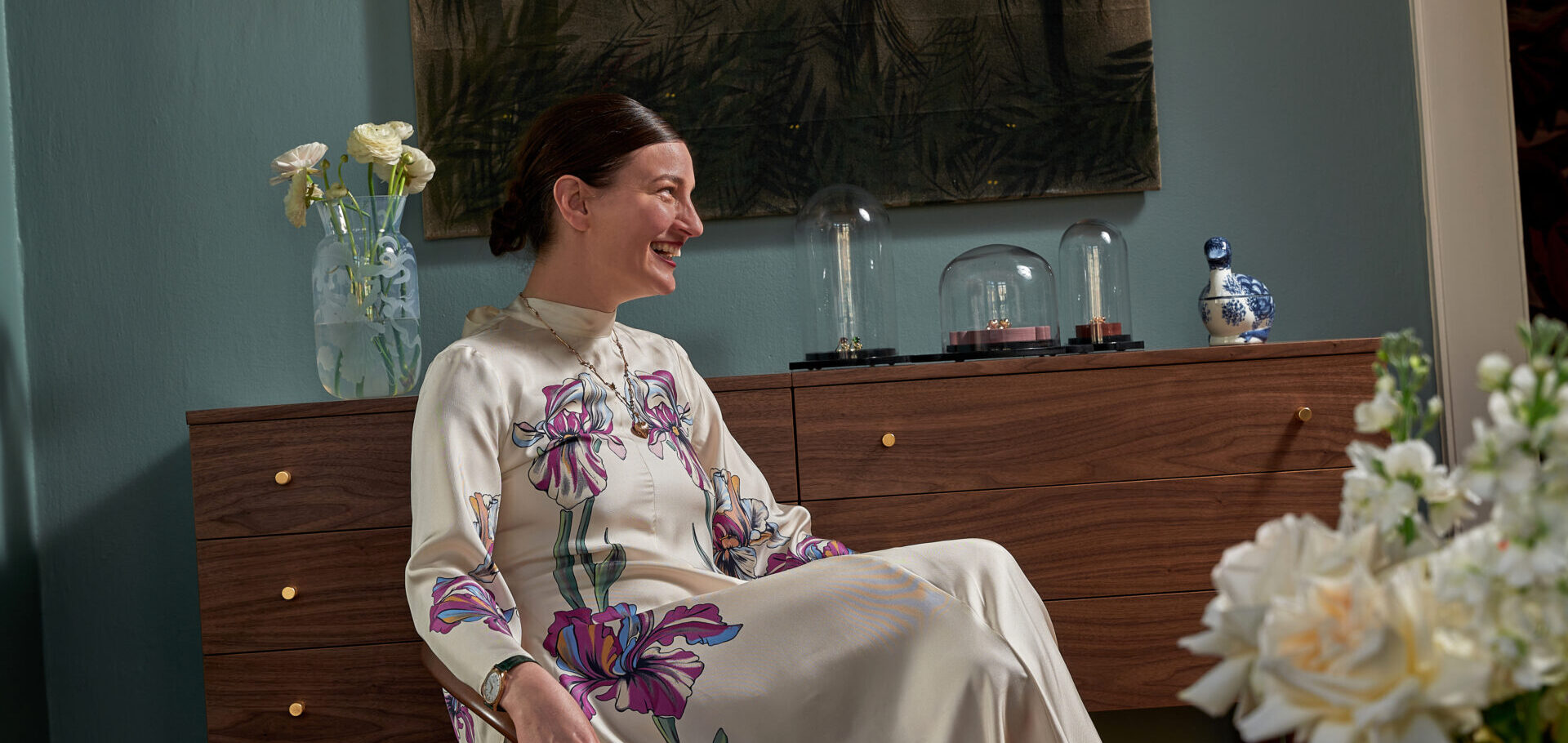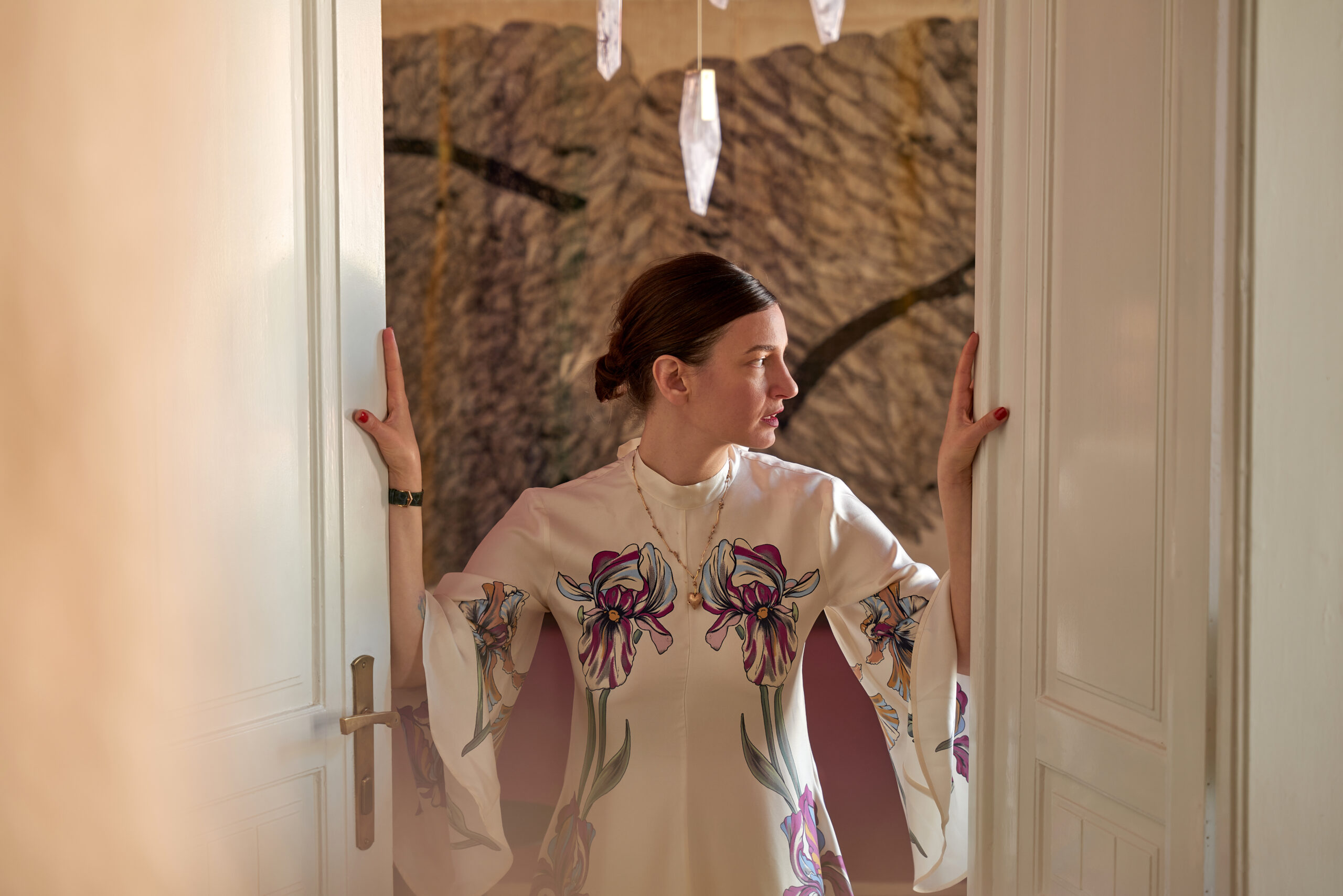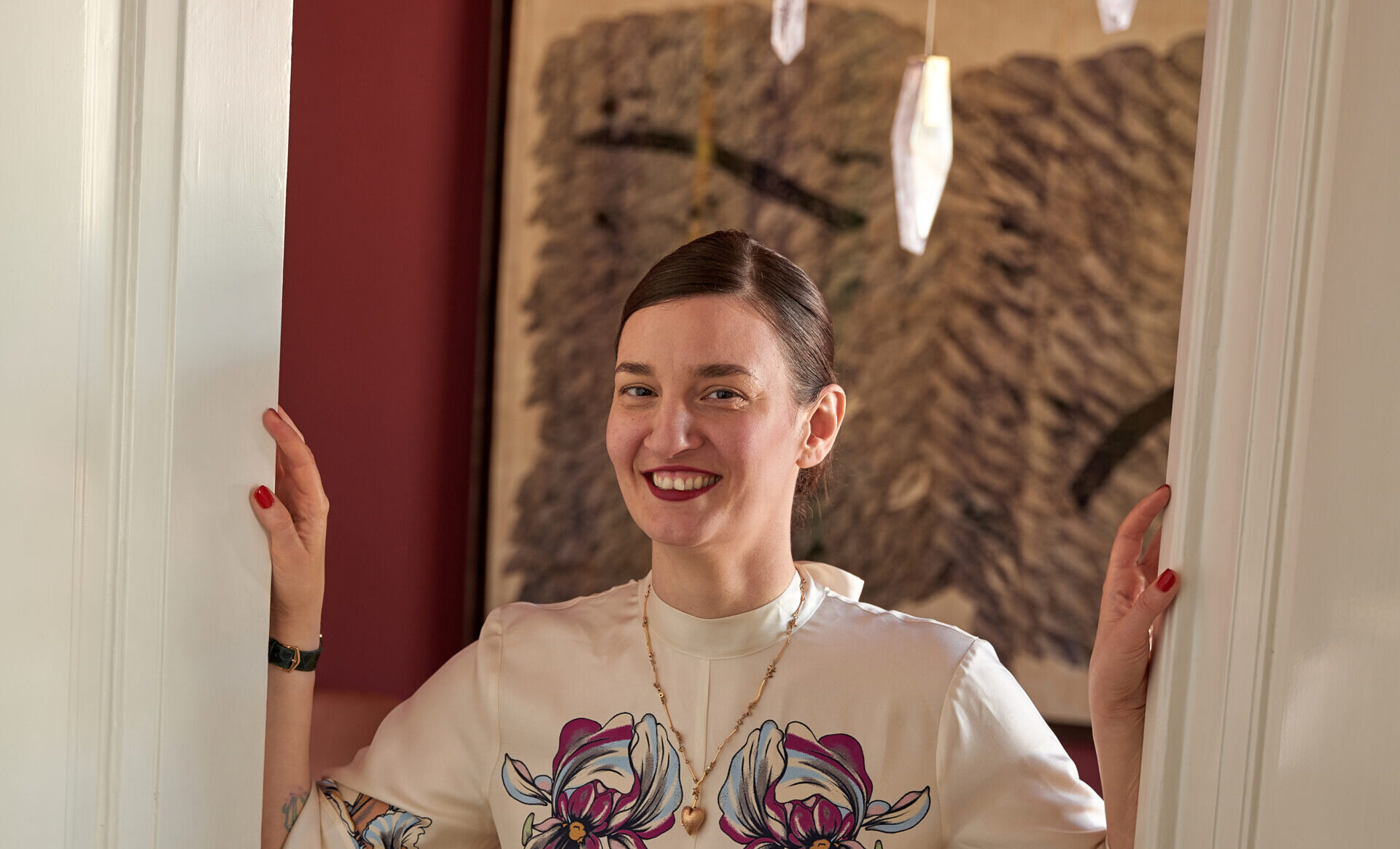The title of the exhibition of your collection comes from a poem by Jan Skácel. Why is he so important to you?
Skácel is, I would say, vitally important to me. I read a lot, my parents encouraged me to read from a young age. However, I never really liked poetry and didn’t understand what people saw in it. Then, about 15 years ago, a friend gave me the poetry collection Smuténka on Vyšehrad, which is my absolute favorite place. And I totally got stuck on it. What I like about him is how he, by choosing simple words, can touch your soul. He describes an everyday moment, an ordinary object, or even an emotion in such a way that you realize its strength. And even though I love ornate things and even kitsch, I’m drawn to Skácel’s simplicity. In a way, it’s also a simple form of life. His poems make me slow down in the rush of life and notice the little things. I have a similar reaction to the poems of Pavla Melková.
Where does your relationship with art come from?
I’ve been drawing since I was a child, I used to model little horses. I loved mystery and enigmas, for example, in the form of books by Arthur C. Clarke. When I was about ten, I went to a bookstore on Příkopy to buy his book with a stunning cover featuring a crystal skull. And right next to it was a book about Salvador Dalí, which I absolutely loved. Dalí later disappointed me, but he introduced me to surrealism. I discovered artists like Jindřich Štýrský, Leonora Carrington, Max Ernst, and others.
Do you remember the moment when you started collecting?
I’m the type of person who goes for a walk and brings back four pine cones, a piece of moss, and a twig. I collect all sorts of things, like ducks and swans, the artistic ones, but also trinkets from Kolbenka for five crowns. The desire to collect things that speak to me has always been there. When I was little, I collected stickers and scented papers, which we traded with the other kids. In art school, I started exchanging things with my classmates, and I still barter today. The exchanged items form a large part of my collection. It’s much more personal than buying something, which is just about “like, don’t like,” “I can afford it, I can’t afford it.” You also give a part of yourself back to the other person. We need to share the same values, and we need to be interested in each other’s things.
All the pieces are very personal to you; you need to surround yourself with them and live with them. However, you also have them exhibited in your showroom, which has become a gallery.
I’ve always wanted to have a gallery, and in a way, I’ve fulfilled that wish. Now I’m opening a new showroom, where I’ll continue the previous one with exhibitions, but on a smaller scale. I can’t help myself, I want to show people, clients who come to me, and inspire them that living in art is natural and enriches your life.
Do you have anything hidden in a warehouse?
No, I live in art, I don’t need and don’t want to hoard it, I’m not interested in its investment potential, I need to look at it and enjoy it. Every day I start with a big cup of coffee, sit on the couch with it, warm it against my chest, and look at the art that covers every part of my wall. I often lay things on the floor so I can look at them.
Could you define your collection?
I’ve never thought about it, but there are definitely only truly heartfelt things in it. When I follow an artist’s work, it’s not that I want something from them – anything. The piece has to touch me. I’m drawn to work that comes from the deepest part of the soul. For example, Louise Bourgeois, Kiki Smith, or Tereza Štětinová. It’s very feminine, and she doesn’t pretend it’s not.
In my collection, I have a lot of small things. They seem more intimate to me, and I feel that creating something small is much harder than creating something big that dazzles. It has to have more strength to stand its ground and speak to the viewer. New works come to me when they speak to me. I also have a rule – when I sell one of my original pieces of jewelry, which happens a few times a year, I buy art.
Showing my collection publicly is very personal to me, almost intimate. It’s a look into my soul.
You have many works by female artists. Is there a reason for that?
It’s not that I consciously lean towards female art. The piece has to speak to me. However, when I go to a gallery and see good works by a woman, I feel immense pride that she made it. It’s really not easy to succeed, especially in art. I’m fascinated that even with a family and many responsibilities, the immense desire to create never fades. Maybe that’s why female art speaks to me so much because I feel their deep need for things to be created. With men, there’s often more reason behind it, but of course not always.
You also work with symbols, and they appear in the pieces in your collection. For example, hair and eyes.
I only realized that some symbols repeat when I was preparing for this exhibition. Often, they mean something personal to me, and I’m probably subconsciously drawn to them. I perceive them subjectively and project myself into the image, creating a bond with it. Even though the same symbol might be interpreted completely differently by the artist. For example, braids and hair represent femininity to me, the care one takes of oneself as a woman.
During my first visit to New York, I came across a tiny ancient statue in MoMA that had eyes, and I couldn’t take my eyes off them. I felt like they were pulling me somewhere, and I didn’t know where. I went to see them again twice, and with every visit to the city, I go again. Eyes have great power for me.
How do you discover new artists?
I go to exhibitions and school critique sessions. I often follow artists for a long time because only over time does it show how big the inner drive is that pushes them to create. Surviving even after art school is not easy, and many people go in a different direction.
In general, I don’t let anyone advise me, and especially not about what I should collect. The exception is works by deceased artists, which I consult with Honza Třeštík, with whom I have a close relationship. I trust his knowledge and that he will advise me well.
You have roots in Serbia, but most of the artists in your collection are Czech. Does foreign art not attract you?
It’s interesting because I like to travel for art to Art Basel, the Venice Biennale, but I never think about buying anything. Recently, however, I was approached by a Polish artist whose work I’d like, and I’m also eyeing a Serbian artist.
How do you perceive an artist and their work? Are they two separate worlds?
I think it’s the opposite. Art reflects a certain sensitivity, and that sensitivity comes from what’s inside, it’s a reflection of you and your personality. If I want to own a piece, I need the artist’s personality to resonate with me. But when I go to see an exhibition, it’s something different – there, I only judge the quality of the work.
Is visual art an inspiration for your own work?
In my work, I draw mainly from fine art. Since high school, an important inspiration for me has been the Pre-Raphaelites (a group of English artists from the mid-19th century, editor’s note) and their Art Nouveau aesthetics, symbolism, and use of color. I approach jewelry as if it were a sculpture.
If you could wish for any artwork, who would it be from?
Probably from Leonora Carrington, Louise Bourgeois, or a sculpture by Karel Malich. I love Malich.




